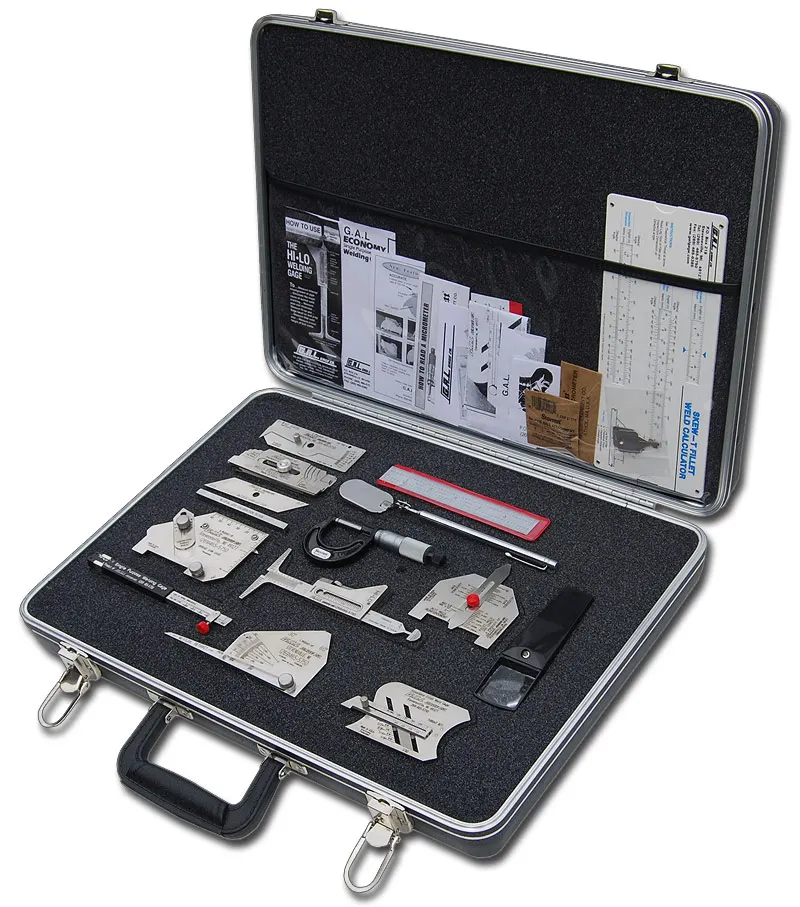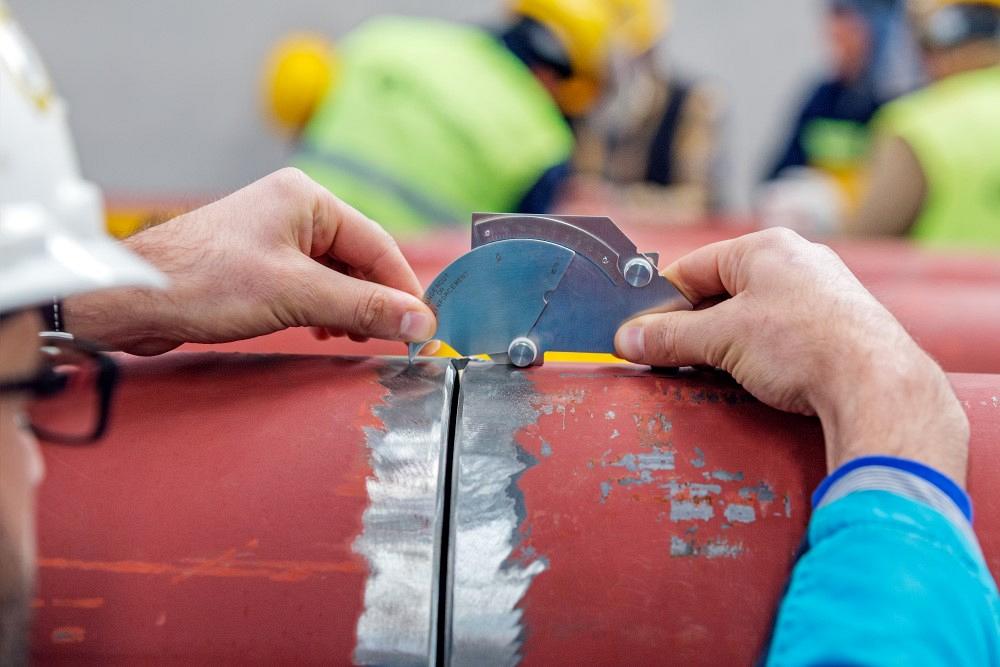How to Make Certain Quality with Welding Inspection Gilbert Arizona: Best Practices
How to Make Certain Quality with Welding Inspection Gilbert Arizona: Best Practices
Blog Article
A Comprehensive Overview to Welding Examination: Understanding Specifications, Techniques, and Best Practices for Quality Guarantee

Welding evaluation plays a critical function in making certain the architectural honesty and security of welded parts, requiring a thorough understanding of sector standards such as those developed by AWS and ASME. Various examination techniques, including aesthetic and ultrasonic screening, are employed to detect possible flaws that might compromise top quality. Applying finest practices can significantly boost functional integrity and foster trust fund amongst customers. Welding Inspection Gilbert Arizona. As we discover these important elements, it ends up being evident that the ramifications of welding inspection expand much past conformity, inviting a better assessment of how these processes shape industry criteria and methods.
Value of Welding Assessment
Welding examination plays a critical function in making sure the honesty and security of welded frameworks. It is a necessary procedure that verifies that welds adapt predefined specifications, which is important in different sectors, consisting of building and construction, automobile, and aerospace. By carrying out comprehensive examinations, possible defects such as fractures, incomplete blend, and porosity can be determined early, avoiding catastrophic failures that could lead to crashes or expensive fixings.
The value of welding inspection prolongs past plain compliance with guidelines; it additionally promotes trust with stakeholders. Customers and regulative bodies anticipate guarantee that the frameworks they rely upon are developed to stand up to functional stresses. In addition, effective welding assessment practices contribute to lasting durability and performance of the frameworks, eventually leading to minimized maintenance expenses.
Furthermore, welding inspection advertises a culture of quality within organizations, motivating adherence to ideal techniques and constant improvement. By integrating evaluation processes into the welding workflow, business can boost their credibility and establish themselves as leaders in quality control. In final thought, the relevance of welding inspection lies in its capacity to guard lives, ensure structural dependability, and support industry requirements, making it an essential facet of welding operations.
Trick Industry Standards
Making sure compliance with crucial industry criteria is vital for keeping the quality and safety and security of welded frameworks. Various organizations develop these standards to advertise best methods in welding and inspection. Among one of the most recognized are the American Welding Culture (AWS) and the American Society of Mechanical Engineers (ASME), which give comprehensive standards and specifications for welding procedures and inspection requirements.
AWS criteria, such as AWS D1.1 for structural welding, rundown requirements for materials, style, and screening to ensure the stability of welds. ASME codes, including ASME Section IX, regulate the credentials of welders and welding treatments, ensuring constant high quality in commercial applications. Internationally, the ISO 3834 conventional highlights top quality needs for fusion welding, offering a framework for companies to demonstrate compliance with worldwide finest methods.
Conformity with these criteria not just boosts the reliability of welded structures however likewise alleviates dangers connected with architectural failings. Adherence to market requirements is usually a requirement for regulatory approvals and can considerably influence job requirements. Inevitably, understanding and applying these vital criteria are crucial for reliable welding assessment and quality control.
Examination Techniques Introduction
Reliable welding assessment counts on a selection of techniques developed to analyze the quality and stability of welds. These strategies can be broadly categorized into destructive and non-destructive screening (NDT) approaches. Non-destructive screening techniques, which are widely preferred in the market, enable the analysis of welds without compromising the stability of the product.
Among the most frequently used NDT techniques are visual assessment, ultrasonic testing, radiographic testing, and magnetic bit screening. Aesthetic inspection is often the initial step in the assessment procedure, making it possible for assessors to determine surface area blemishes and examine weld grain profiles. Ultrasonic screening employs high-frequency audio waves to detect interior flaws and determine the density of welds. Radiographic testing involves making use of X-ray or gamma-ray imaging to expose inner problems, while magnetic fragment testing is reliable for discovering surface and near-surface suspensions in ferromagnetic products.
Each strategy has its own advantages and restrictions, making it crucial for examiners to select one of the most ideal method based on the specific demands of the task, the products entailed, and the urgency of the welds being evaluated. This mindful option makes certain comprehensive assessments and supports security and quality standards in welding operations.

Usual Issues and Their Effects
A comprehensive understanding of usual issues in welds is critical for keeping architectural integrity and safety in welded buildings. Welding flaws can dramatically endanger the mechanical residential or commercial properties of the joint, resulting in failures that could endanger both workers and devices.
Typical problems consist of porosity, which shows up as tiny gas pockets entraped in the weld steel, damaging the overall framework. Breaking is one more common issue, commonly resulting from fast cooling or improper joint design, leading to tension concentrations that can result in devastating failings. Insufficient combination happens when the weld steel falls short to properly bond with the base material, creating weak factors that might lead to splitting up under load.
Various other noteworthy problems include undercutting, where the weld grain deteriorates the base metal, and slag inclusions, which can hinder the weld's toughness. Each of these problems has specific implications; as an example, porosity can minimize ductility, while splitting straight impacts tensile strength. Determining and recognizing these problems throughout assessment is crucial for carrying out corrective actions and making sure conformity with industry requirements, ultimately securing the structural honesty of bonded settings up.
Best Practices for Quality Control
Applying best methods for quality control in welding processes is crucial for achieving ideal results and reducing flaws. One critical practice is the establishment of clear welding procedures that stick to market requirements and specs. These procedures ought to include comprehensive directions relating to product option, joint prep work, and welding strategies to ensure consistency and top quality.
Normal training and qualification of welding employees are also essential. Experienced welders who comprehend the significance of high quality assurance are most likely to generate audio welds. Additionally, carrying out a durable inspection program, more including both visual and non-destructive screening (NDT), can aid determine issues early in the process, permitting timely corrective actions.
Documents plays a vital function in top quality guarantee. Keeping exact records of welding examinations, repair services, and specifications makes certain traceability and responsibility. Moreover, employing sophisticated technologies such as automated welding devices can improve accuracy and decrease the capacity for human error - Welding Inspection Gilbert Arizona.
Lastly, promoting a society of quality within the organization motivates employees to prioritize high quality in their job. By adhering to these finest techniques, organizations can enhance the stability of their welding procedures, ultimately resulting in boosted item quality and minimized prices related to rework and repair work.

Conclusion
To conclude, welding evaluation plays a crucial role in making sure the integrity and security of bonded frameworks. Adherence to essential sector standards, such as those developed by AWS and ASME, is important for efficient top quality top article assurance. Employing numerous examination methods enables for the recognition of usual defects, thus alleviating possible risks. By executing ideal techniques, organizations can boost reliability, lessen upkeep prices, and grow trust fund among clients, eventually contributing to effective welding operations.
Additionally, welding inspection promotes a culture of high quality within organizations, motivating adherence to finest methods and constant enhancement. In conclusion, the significance of welding evaluation lies in its capacity to guard lives, make certain architectural dependability, and support market requirements, making it an essential aspect of welding procedures.
Among the most identified are the American Welding Culture (AWS) and the American Culture of Mechanical Engineers (ASME), which give thorough guidelines and requirements for welding procedures and examination requirements.
Inevitably, understanding and carrying out these key requirements are crucial for efficient welding examination and high quality guarantee.
Effective welding assessment relies on a other range of strategies designed to examine the top quality and integrity of welds. - Welding Inspection Gilbert Arizona
Report this page